White Papers & Articles
Ecosystems by the Dozen
Partner management processes already developed in our profession remain relevant, but we do need to rethink how we apply them to collaborative ecosystems. By distilling what we know about effective collaborative processes into collaborative principles, we can create a framework that is flexible and robust enough to handle the challenge. Overarching principles that guide behavior and thinking are more scalable and can be codified into overarching
governance, metrics, etc.
What Your CEO Should Know about Partners and Ecosystems
Some CEOs and senior leadership understand the power of partnering and ecosystems. Some do not. Many have an idea that partnering is important, but they’re not sure why. Communicating these eight pointers should help you inform your leadership on how partners are crucial to growing and scaling the business. Most important is the CEO role in supporting the partnering business model. Executive leadership is often the critical success factor in setting the strategy, molding the culture, and providing the resources to ensure that you are building a winning ecosystem.
Creating the Partner Journey to Success
When done right, self-guided journeys get partners up to speed more quickly, boost results more dramatically, and require less time and resources of partner managers. One major cybersecurity company put together a jouney that mapped out in painstaking detail what the partner would do each day of the first month and a half, a campaign that helped its partners drive a threefold increase in deal registrations and a tenfold spike in user accounts in the first year.
Looking into the Future
What are the skills that will help alliance professionals be most effective in the virtual pandemic working world? Alliance managers need the business savvy to identify new opportunities in the chaos and shift their partner ecosystems to create new solutions to adapt and to do it quickly.
Finding your North Star
Ecosystems are galvanized by the unifying power of a common North Star. Put the customer experience at the center of your universe. Solving for the customer problem becomes a compelling North Star. It will guide you in building the ecosystem, how you innovate and how you go-to-market.
Ecosystems in Motion
By Michael J. Burke with Sidebar by Norma Watenpaugh
From Forklifts and Hotels to Software and AI in the Cloud, These Constantly Expanding Universes Have Been Merging and Converging. There’s Still Plenty of Space Available—But Will You Be a Sun, Moon, Planet, or Particle?
Partnering for Agility
Agility in Partnering
Business agility – the ability for your business to pivot like a weathervane in a hurricane – is one of the most discussed and sought-out attributes of companies and organizations of all sizes, in all industries, and sectors. In this climate, the conventional partnering models aren’t working anymore. A faster, more resilient and customer-centric approach is needed.

The Next Generation Ecosystem
Making the Big Channel Bets
Traditional value-added resellers face “an extinction event” in the information technology channel, but smart vendors and their partners are retooling their partner strategies, ecosystems and business models to navigate disruption and thrive in the cloud. Learn what we discovered in extensive interviews with leading channel chiefs and alliance executives.

Building an Enterprise Partner Ecosystem
To many organizations, alliances and strategic partnerships are “the new way businesses grow and innovate,” particularly as they experience a rising profile within the C-suite. As partnership alliances become an increasingly important source of innovation for companies, they are integral to future success. Key to building a strong ecosystem of partners is understanding the different roles they play across the value chain and at different inflection points in product and market maturity as well as understanding customers buying preferences and how different partners may influence their decisions.
Measuring Ecosystem Health
Managing for Sustainability and Productivity in the Channel
Health of the partner ecosystem is more than a roll up of individual partner scorecards, although, there is definitely a relationship between how your program enables individual partners and the cumulative outcome. Ecosystem health is dependent upon many factors that can be captured in a balanced scorecard model. Metrics should inform you how to make meaningful changes to your ecosystem to optimize the health, sustainability, and profitability of your partners.
Build, Buy, Partner: So Many Choices
Product marketing, management and development departments have pressure from all sides to add competitive differentiation to product, fill in product line gaps and offer a complete solution to customers. Product groups have three strategies they can choose from to solve these issues: Build products or components from scratch, buy components, product, product lines or companies, or partner with companies to meet these product development needs. Authors: Deborah Henken and Norma Watenpaugh Updated: 2016.
Making Partner Managers Winners – What They Need to Succeed
To many organizations, alliances and strategic partnerships are “the new way businesses grow and innovate,” particularly as they experience a rising profile within the C-suite. As partnership alliances become an increasingly important source of innovation for companies, they are integral to future success. Building the skills of an effective Partner Manager has far reaching impact. The role of partner manager is to enable innovation, growth and competitive advantage through partnerships and they need a full toolbox for the job.
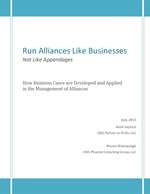
Run Alliances Like a Business – Not Like Appendages
The most successful alliances manage their operation like businesses, applying the best practices of running a business and integrating alliance operations into the core of their business. A business case is essential in understanding what factors contribute to alliance success. Partner to Profit and Phoenix Consulting Group have collaborated in conducting research to understand current practices in the development of alliance businesses cases and how those business cases are used to inform decision makers in setting performance objectives and resource investments.
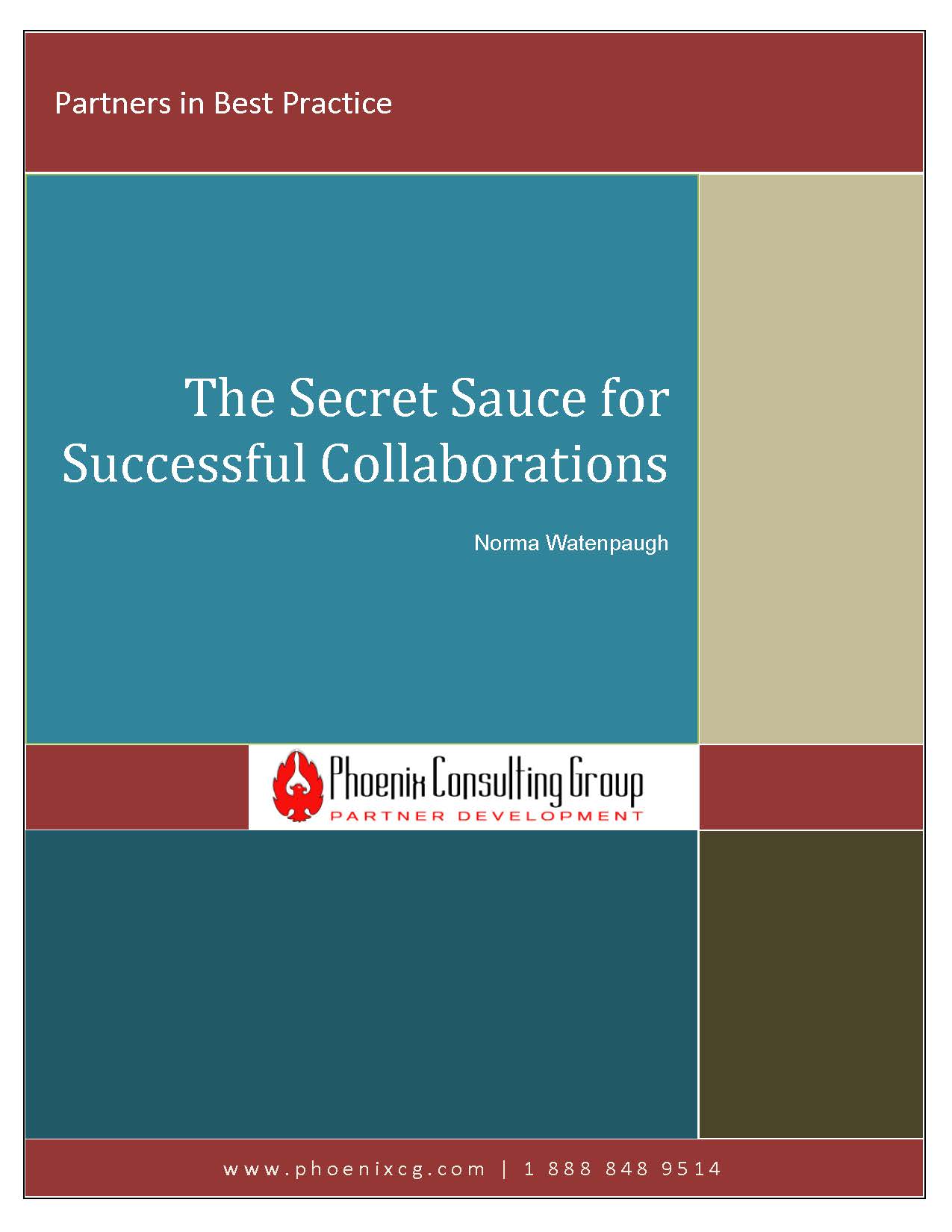
The Secret Sauce to Collaboration Success
Partnering and building alliances is the preferred model of business growth for many CEO’s. In the IBM 2012 CEO Study, 70% of CEOs plan to partner extensively and indeed the top performers among those CEO’s do just that. Partnering leverages the expertise, resources, and talent beyond the walls of a single organization. But what are the crucial ingredients for collaboration success?

Partner Health Diagnostic – Enabling Transformation
The ultimate goal of a diagnostic is to improve alliance relationships and performance by acting on objective feedback. Responses to the survey can open an actionable discussion on how to improve alliance performance and can ultimately lead to a transformation in your alliance.

Optimize your Return on Relationships
In order to optimize your Return on Relationship, you must understand how you are creating value for customers, your partner, as well as for your organization. We have conducted research into hundreds of alliances through client engagements with companies such as Cisco, Adobe, PayPal, and IBM. In our case study research, we compared the value propositions of very successful alliances and those that yielded disappointing results. We found that successful alliances tracked partner value in three dimensions: Solution, Financial, and Sales.

Collaborative Selling
Getting sales reps to leverage the power of an alliance is the last mile in sell-with alliances – those that focus on driving revenue and it is by far the most treacherous mile. Seasoned alliance managers reveal their experiences regarding what works and what doesn’t to get these alliances across the finish line in delivering revenue through collaboartive selling.
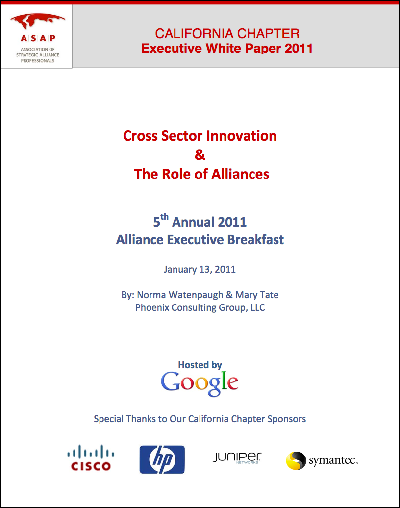
Cross Sector Innovation and the Role of Alliances
The California Chapter of the Association of Strategic Alliance Professionals held their annual Alliance Executive Roundtable on January 13, 2011. The meeting, hosted by Google on their Mountain View Campus, was attended by twenty‐four of the area’s most senior alliance leaders representing a cross‐section of the business community. Participants voiced their views on the discussion topic of: Cross Sector Innovation and the Role of Alliances.
The group explored the role alliance managers play in creating new opportunities through innovation across non‐traditional industries such as high tech with healthcare, construction and energy. Special guest, Steve White, Program Director for the IDC Software Alliances Leadership Council, shared IDC’s 2011 outlook for IDC and shared some of the trends and predictions.
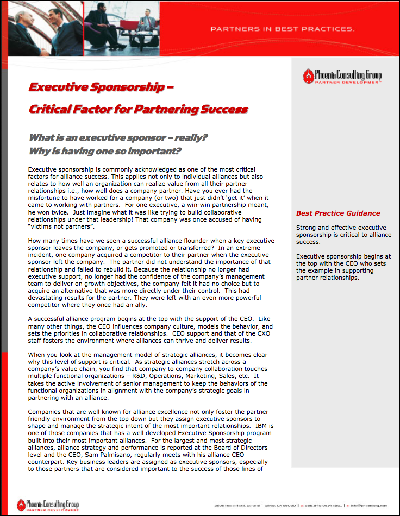
Effective Executive Sponsorship
Strong and effective executive sponsorship is critical to alliance success. Executive sponsorship begins at the top with the CEO who sets the example in supporting partner relationships.
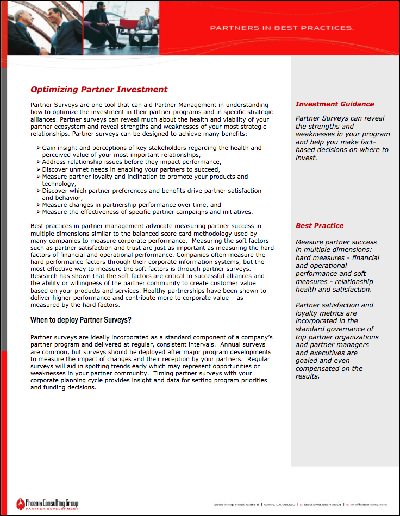
Optimizing Partner Investments
Partner Surveys can reveal the strengths and weaknesses in your program and help you make fact-based decisions on where to invest.

Managing an Alliance Portfolio
James Bamford and David Ernst
Large companies often have dozens of alliances – and little idea how they are performing.
Managing Alliances with the Balanced Scorecard
Robert S. Kaplan, David P. Norton, and Bjarne Rugelsjoen
Fifty percent of corporate alliances fail. But you ca increase your partnership’s odds of success by applying these techniques.
What Your CEO Should Know about Partners and Ecosystems
Some CEOs and senior leadership understand the power of partnering and ecosystems. Some do not. Many have an idea that partnering is important, but they’re not sure why. Communicating these eight pointers should help you inform your leadership on how partners are crucial to growing and scaling the business. Most important is the CEO role in supporting the partnering business model. Executive leadership is often the critical success factor in setting the strategy, molding the culture, and providing the resources to ensure that you are building a winning ecosystem.
Creating the Partner Journey to Success
When done right, self-guided journeys get partners up to speed more quickly, boost results more dramatically, and require less time and resources of partner managers. One major cybersecurity company put together a jouney that mapped out in painstaking detail what the partner would do each day of the first month and a half, a campaign that helped its partners drive a threefold increase in deal registrations and a tenfold spike in user accounts in the first year.
Looking into the Future
What are the skills that will help alliance professionals be most effective in the virtual pandemic working world? Alliance managers need the business savvy to identify new opportunities in the chaos and shift their partner ecosystems to create new solutions to adapt and to do it quickly.
Finding your North Star
Ecosystems are galvanized by the unifying power of a common North Star. Put the customer experience at the center of your universe. Solving for the customer problem becomes a compelling North Star. It will guide you in building the ecosystem, how you innovate and how you go-to-market.
Ecosystems in Motion
By Michael J. Burke with Sidebar by Norma Watenpaugh
From Forklifts and Hotels to Software and AI in the Cloud, These Constantly Expanding Universes Have Been Merging and Converging. There’s Still Plenty of Space Available—But Will You Be a Sun, Moon, Planet, or Particle?
Partnering for Agility
Agility in Partnering
Business agility – the ability for your business to pivot like a weathervane in a hurricane – is one of the most discussed and sought-out attributes of companies and organizations of all sizes, in all industries, and sectors. In this climate, the conventional partnering models aren’t working anymore. A faster, more resilient and customer-centric approach is needed.

The Next Generation Ecosystem
Making the Big Channel Bets
Traditional value-added resellers face “an extinction event” in the information technology channel, but smart vendors and their partners are retooling their partner strategies, ecosystems and business models to navigate disruption and thrive in the cloud. Learn what we discovered in extensive interviews with leading channel chiefs and alliance executives.

Building an Enterprise Partner Ecosystem
To many organizations, alliances and strategic partnerships are “the new way businesses grow and innovate,” particularly as they experience a rising profile within the C-suite. As partnership alliances become an increasingly important source of innovation for companies, they are integral to future success. Key to building a strong ecosystem of partners is understanding the different roles they play across the value chain and at different inflection points in product and market maturity as well as understanding customers buying preferences and how different partners may influence their decisions.
Measuring Ecosystem Health
Managing for Sustainability and Productivity in the Channel
Health of the partner ecosystem is more than a roll up of individual partner scorecards, although, there is definitely a relationship between how your program enables individual partners and the cumulative outcome. Ecosystem health is dependent upon many factors that can be captured in a balanced scorecard model. Metrics should inform you how to make meaningful changes to your ecosystem to optimize the health, sustainability, and profitability of your partners.
Build, Buy, Partner: So Many Choices
Product marketing, management and development departments have pressure from all sides to add competitive differentiation to product, fill in product line gaps and offer a complete solution to customers. Product groups have three strategies they can choose from to solve these issues: Build products or components from scratch, buy components, product, product lines or companies, or partner with companies to meet these product development needs. Authors: Deborah Henken and Norma Watenpaugh Updated: 2016.
Making Partner Managers Winners – What They Need to Succeed
To many organizations, alliances and strategic partnerships are “the new way businesses grow and innovate,” particularly as they experience a rising profile within the C-suite. As partnership alliances become an increasingly important source of innovation for companies, they are integral to future success. Building the skills of an effective Partner Manager has far reaching impact. The role of partner manager is to enable innovation, growth and competitive advantage through partnerships and they need a full toolbox for the job.

Run Alliances Like a Business – Not Like Appendages
The most successful alliances manage their operation like businesses, applying the best practices of running a business and integrating alliance operations into the core of their business. A business case is essential in understanding what factors contribute to alliance success. Partner to Profit and Phoenix Consulting Group have collaborated in conducting research to understand current practices in the development of alliance businesses cases and how those business cases are used to inform decision makers in setting performance objectives and resource investments.

The Secret Sauce to Collaboration Success
Partnering and building alliances is the preferred model of business growth for many CEO’s. In the IBM 2012 CEO Study, 70% of CEOs plan to partner extensively and indeed the top performers among those CEO’s do just that. Partnering leverages the expertise, resources, and talent beyond the walls of a single organization. But what are the crucial ingredients for collaboration success?

Partner Health Diagnostic – Enabling Transformation
The ultimate goal of a diagnostic is to improve alliance relationships and performance by acting on objective feedback. Responses to the survey can open an actionable discussion on how to improve alliance performance and can ultimately lead to a transformation in your alliance.

Optimize your Return on Relationships
In order to optimize your Return on Relationship, you must understand how you are creating value for customers, your partner, as well as for your organization. We have conducted research into hundreds of alliances through client engagements with companies such as Cisco, Adobe, PayPal, and IBM. In our case study research, we compared the value propositions of very successful alliances and those that yielded disappointing results. We found that successful alliances tracked partner value in three dimensions: Solution, Financial, and Sales.

Collaborative Selling
Getting sales reps to leverage the power of an alliance is the last mile in sell-with alliances – those that focus on driving revenue and it is by far the most treacherous mile. Seasoned alliance managers reveal their experiences regarding what works and what doesn’t to get these alliances across the finish line in delivering revenue through collaboartive selling.

Cross Sector Innovation and the Role of Alliances
The California Chapter of the Association of Strategic Alliance Professionals held their annual Alliance Executive Roundtable on January 13, 2011. The meeting, hosted by Google on their Mountain View Campus, was attended by twenty‐four of the area’s most senior alliance leaders representing a cross‐section of the business community. Participants voiced their views on the discussion topic of: Cross Sector Innovation and the Role of Alliances.
The group explored the role alliance managers play in creating new opportunities through innovation across non‐traditional industries such as high tech with healthcare, construction and energy. Special guest, Steve White, Program Director for the IDC Software Alliances Leadership Council, shared IDC’s 2011 outlook for IDC and shared some of the trends and predictions.

Effective Executive Sponsorship
Strong and effective executive sponsorship is critical to alliance success. Executive sponsorship begins at the top with the CEO who sets the example in supporting partner relationships.

Optimizing Partner Investments
Partner Surveys can reveal the strengths and weaknesses in your program and help you make fact-based decisions on where to invest.

Managing an Alliance Portfolio
James Bamford and David Ernst
Large companies often have dozens of alliances – and little idea how they are performing.
Managing Alliances with the Balanced Scorecard
Robert S. Kaplan, David P. Norton, and Bjarne Rugelsjoen
Fifty percent of corporate alliances fail. But you ca increase your partnership’s odds of success by applying these techniques.




